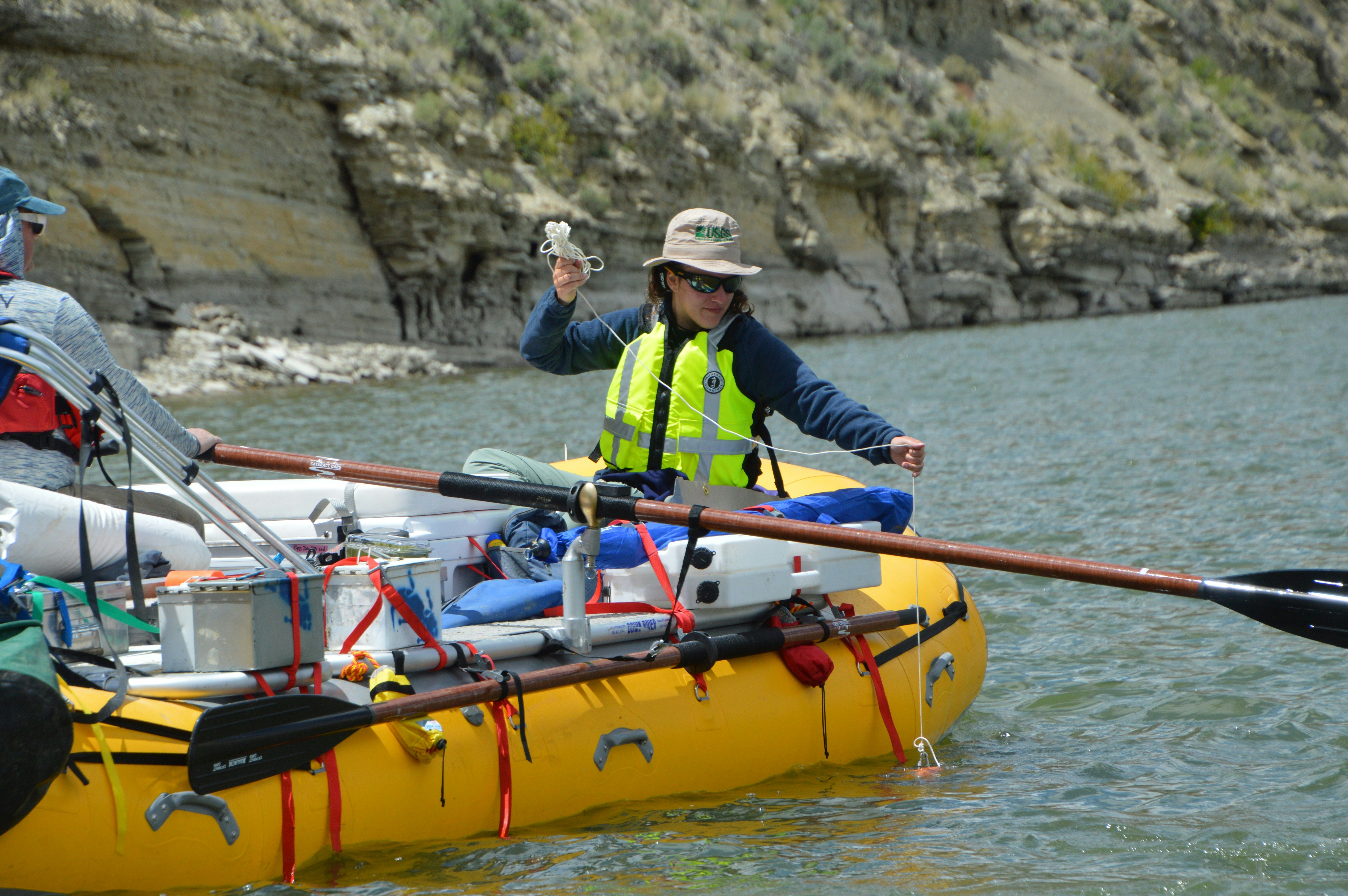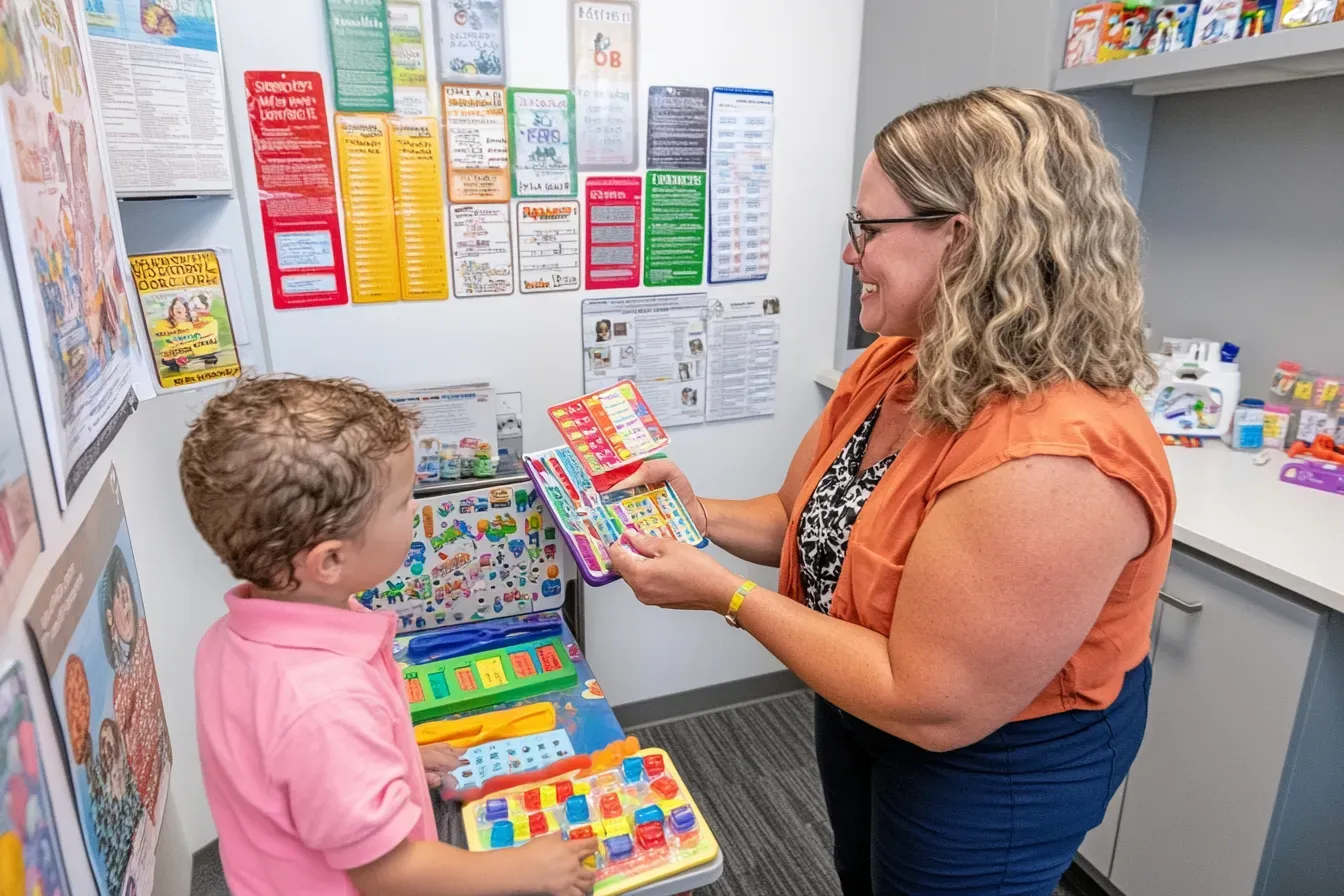ESL Teacher Requirements & ESOL Certification in Alaska in 2026
Alaska’s growing population of English language learners creates a rising demand for qualified ESL teachers. According to recent data, over 7% of students in the state require English language support, highlighting significant opportunities for educators with specialized skills. Pursuing ESL teaching in Alaska offers stable employment and competitive salaries, especially in rural areas with limited access to qualified instructors.
This article outlines the state’s specific ESL teacher requirements and ESOL certification pathways. Prepared by career planning experts, it provides clear, actionable steps to help prospective teachers navigate certification, meet legal standards, and secure rewarding positions in Alaska’s education system.
Key Things to Know About ESL Teaching Requirements and ESOL Certification in Alaska
- A bachelor’s degree in education or a related field is required to become an ESL teacher in Alaska, with many opting for a focus in TESOL or English linguistics to strengthen their expertise.
- ESOL certification in Alaska mandates completing an approved ESOL endorsement program, which typically includes coursework in language acquisition, cultural diversity, and assessment strategies.
- Alaska’s Department of Education reports a growing demand for ESL teachers, reinforcing the need for certified educators to support the state’s increasing English language learner population.
Table of Contents
- What are the education requirements to teach ESL in Alaska?
- How do you get ESOL certified in Alaska?
- What are the alternative routes to becoming an ESL teacher in Alaska?
- What exams are required for ESL teacher certification in Alaska?
- How often do ESL teachers need to renew their certification in Alaska?
- What are the continuing education requirements for ESL teachers in Alaska?
- How long does it take to become an ESL teacher in Alaska?
- Does Alaska have reciprocity for ESL certification?
- Is there a demand for ESL teachers in Alaska?
- How much do ESL teachers make in Alaska?
- Other Things You Need to Know About ESL Teacher Requirements & ESOL Certification in Alaska
What are the education requirements to teach ESL in Alaska?
Meeting Alaska's academic requirements is essential for those seeking to teach English as a Second Language (ESL) effectively across the state's diverse communities. The following educational paths provide practical options for fulfilling these standards. Alaska ESL teacher education requirements primarily involve obtaining relevant degrees and endorsements aligned with state-approved programs.
- Bachelor’s Degree in Education: A bachelor’s degree from a regionally accredited college in elementary, secondary, or special education is the foundation for teaching ESL in Alaska, ideally through a state-approved educator preparation program.
- ESL Concentration, Minor, or Track: Adding an ESL endorsement by completing a concentration or minor in ESL or TESOL as part of a bachelor’s degree enhances qualifications and prepares teachers for English learners.
- Master’s Degree in ESL or Education: Pursuing a master’s degree in ESL, language and literacy, or education provides advanced skills and can improve career opportunities and salary prospects.
- Graduate Certificate in ESL/Language and Literacy Education: For certified teachers, earning a graduate certificate in ESL or language and literacy prepares educators for specialized ESL endorsement and advanced instructional methods.
- Completion of a State-Approved Teacher Preparation Program: Essential for all candidates, these programs include crucial coursework in multicultural education and Alaska studies to address the state’s unique learner demographics.
Prospective educators interested in accessible routes can explore the best online associate in education programs as a stepping stone toward fulfilling Alaska ESL teacher education requirements. Incorporating these options ensures readiness to meet the state's unique teaching demands and support English learners effectively.
How do you get ESOL certified in Alaska?
To obtain ESOL (English for Speakers of Other Languages) certification in Alaska, candidates must follow a structured process overseen by the Alaska Department of Education and Early Development. This certification is an endorsement added to an existing teaching license rather than a standalone credential. The path involves completing specific education, training, and experience requirements designed to ensure teachers are well-prepared to support English learners effectively. Below are the key requirements for ESOL certification in Alaska:
- Education Requirements: Applicants need a bachelor’s or master’s degree from a regionally accredited institution, typically including a state-approved educator preparation program. Many choose degrees in elementary, secondary, or special education with an ESL minor or concentration, such as the TESOL minor at the University of Alaska Fairbanks.
- Teacher Preparation Program: Completion of an approved teacher preparation program is mandatory, involving coursework and supervised field experience focused on ESL teaching methods, language acquisition, and linguistics to build specialized instructional skills.
- Alaska-Specific Coursework: Candidates must complete three semester hours each in Alaska Studies and Alaska Multicultural coursework to address the state’s cultural and linguistic diversity. These can be integrated into the degree or taken as supplemental courses.
- Classroom Teaching Experience: To earn the Professional Teacher Certificate with ESOL endorsement, applicants must show two years of teaching experience with a valid certificate. They must submit a resume and the latest teaching evaluation for verification.
- Examinations: Passing scores are required on an approved basic competency exam and a content area exam, but the Praxis exam is not required specifically for ESL endorsement in Alaska.
- Mandatory Trainings: Four state-required trainings must be completed, with documentation proving at least one completed training for each required topic submitted during the application.
- Application Process and Fees: Candidates submit official applications, transcripts, fingerprint cards for background checks, and pay associated fees. The resulting Professional Teacher Certificate is valid for five years and may be renewed.

What are the alternative routes to becoming an ESL teacher in Alaska?
Alternative pathways to becoming an ESL teacher in Alaska respond to the state’s unique needs by providing flexible options for career changers, professionals with degrees in other fields, and those pursuing teaching through nontraditional routes. These programs help address the demand for qualified ESL educators in a landscape where many English Language Learners speak dozens of languages and require skilled instruction.
- Post-Baccalaureate Teacher Preparation Programs: Candidates with bachelor’s degrees outside of education can enroll in these state-approved programs focusing on pedagogy and classroom experience. They typically take about a year to complete and lead directly to initial teaching licensure with an ESL endorsement, offering a fast track into teaching.
- Master’s Degree in Teaching or Education with ESL Endorsement: Pursuing a master's degree at institutions like the University of Alaska Fairbanks involves coursework and fieldwork aligned with licensure and ESL certification requirements. This route tends to open doors to advanced career opportunities and higher salary potential.
- Adding ESL Endorsement to an Existing License: Licensed teachers can expand their qualifications by completing TESOL-focused coursework, such as a 16-credit TESOL minor. This is ideal for educators already in the field who want to meet the growing needs of English Language Learners.
- Out-of-State or Online Alternative Teacher Preparation Programs: Programs outside Alaska or online options approved by Alaska’s education department offer flexibility for those who cannot attend in-person classes. Verifying that these programs satisfy Alaska’s certification criteria is essential.
- National Board for Professional Teaching Standards (NBPTS) Certification: Experienced educators may choose to gain National Board Certification in English as a New Language, enhancing professional credibility, though it does not replace initial licensure.
One Alaska ESL teacher I spoke with, who graduated from a local university, shared that she initially changed careers and found the post-baccalaureate teacher preparation pathway invaluable. “It was intense but rewarding,” she recalled. “Balancing practical classroom time while completing targeted ESL coursework helped me gain confidence quickly.” She highlighted how adding the ESL endorsement allowed her to meet diverse student needs and feel more effective in the classroom. “The program’s blend of theory and hands-on training suited someone like me—coming from outside education but fully committed to this career.” This perspective reflects the practical advantages of Alaska’s alternative routes, showing that while challenges like managing time and coursework exist, the structured opportunities provide clear steps towards becoming a qualified ESL teacher in the state.
What exams are required for ESL teacher certification in Alaska?
Exams play a vital role in Alaska’s ESL teacher certification process by verifying essential academic skills and subject expertise. Meeting these requirements helps ensure educators are academically prepared and ready to support English learners effectively.
- Praxis Core Academic Skills for Educators (Core): This exam tests basic proficiency in reading, writing, and mathematics, with required passing scores for each section. It is mandatory for all initial teacher certification applicants in Alaska to confirm foundational skills needed for effective teaching.
- Praxis Subject Assessments (Praxis II): While there is no specific Praxis exam for the ESL endorsement, candidates must pass a Praxis II assessment in their primary subject area. This demonstrates subject-specific knowledge, particularly important for teachers working with English learners in content-rich environments.
- Approved Basic Competency Exams (alternative to Praxis Core): Alaska accepts several alternatives, like the CBEST or SAT, if candidates meet qualifying scores in reading, writing, and math. This flexibility accommodates those meeting Alaska basic competency exam requirements for ESL teachers from different testing backgrounds or states.
- Alaska Studies and Multicultural Education Coursework (non-exam requirement): Teachers certified outside Alaska must complete coursework in these areas to understand the unique cultural and historical contexts affecting Alaska’s diverse student population.
If you are exploring pathways to meet these criteria, it can be helpful to pursue a bachelor's degree in library science online, which offers flexible study options while meeting educational prerequisites in various fields, including ESL education.
How often do ESL teachers need to renew their certification in Alaska?
ESL teacher certification renewal in Alaska is required every five years to ensure educators maintain up-to-date knowledge and skills aligned with current teaching standards. This ongoing process supports high-quality ESL instruction tailored to the evolving needs of English language learners across the state.
- Renewal Frequency: ESL teachers holding a Professional Teacher Certificate must renew their certification every five years, following the same timeline as all other teaching certifications in Alaska.
- Continuing Education Credits: Certification renewal requires six semester hours of renewal credit from accredited institutions within the five-year period. Credits can be earned through graduate courses, workshops, or approved professional development focused on ESL content.
- Mandatory Training: Teachers must complete state-mandated trainings such as child abuse prevention and suicide awareness every five years. These trainings are often available at no cost through Alaska’s Department of Education eLearning platform.
- Fingerprinting and Background Check: A current fingerprint card for a background check must be submitted unless clearance is already on file with an Alaska public school district. Fingerprinting fees generally range from $25 to $50.
- Renewal Application and Fees: Teachers must file a renewal application with supporting documents and pay a $200 application fee. Total renewal costs vary based on continuing education and other requirements, sometimes exceeding $3,500.
What are the continuing education requirements for ESL teachers in Alaska?
Continuing education is essential for ESL teachers in Alaska to maintain their teaching certificates and stay current with effective language instruction strategies. These ongoing requirements support educators in enhancing their skills, ensuring high-quality instruction for English language learners.
- Number of Credits Required: ESL teachers must complete 6 semester credits of continuing education every five years to renew a standard teaching certificate.
- Approved Activities: Eligible activities include graduate-level courses, workshops, in-service training, and other professional learning related to ESL or culturally sustaining pedagogy.
- CEU Conversion: Fifteen hours of approved continuing education units (CEUs) equal 1 semester credit, with CEUs needing to come from accredited institutions or approved organizations.
- Reporting and Documentation: Teachers must submit certificates of attendance or official documentation with their renewal application, including agendas showing contact hours if not listed directly.
- Renewal Frequency: All continuing education credits must be earned within the five years before applying for certificate renewal.
- Cost: Each CEU applied toward renewal carries a $50 processing fee.
- Mandatory Trainings: ESL educators are required to complete Alaska-specific trainings on topics such as Alaska studies and multicultural education during each renewal cycle.
- Preapproval Advice: While ESL-related credits generally don't require preapproval, teachers should seek approval for courses outside their endorsement area to ensure acceptance.
Meeting the continuing education requirements for ESL teachers in Alaska is integral to the Alaska ESL teacher certificate renewal process, promoting consistent professional growth. For those exploring options to fulfill these credits, reviewing a ranking of most affordable online education degree programs may provide accessible pathways to fulfill the state’s educational standards.
How long does it take to become an ESL teacher in Alaska?
Becoming an ESL teacher in Alaska typically takes about five to six years, starting from the beginning of undergraduate study to obtaining state certification. This timeline includes completing necessary education, practical training, exams, and the certification application process.
- Earning a Bachelor’s Degree: This foundational step usually requires four years of full-time study at an accredited college or university to meet basic eligibility for teaching positions.
- Completing a Teacher Preparation or ESL Program: Taking an additional year to finish a state-approved teacher prep or ESL program is necessary if this was not integrated with the bachelor’s degree.
- Fulfilling Student Teaching or Practicum Requirements: About one semester, typically 12–16 weeks, of hands-on student teaching is required to gain real classroom experience.
- Passing Required Exams: Preparing for and passing the Praxis Core, content area exams, or their alternatives can take several months, depending on individual readiness and test schedules.
- Applying for Certification: The application process via the TEACH-AK system, including background checks and processing, generally takes 4–5 weeks but could extend longer during busy periods.
When I spoke with an ESL teacher from Alaska who graduated from a local program, he shared that the entire journey felt both challenging and rewarding. He explained, “Balancing coursework, student teaching, and exam preparation was intense, especially in the winters when it’s harder to focus.” Despite occasional delays in certification processing, he felt well-prepared entering the classroom. His advice was to stay organized and patient. “It does take time, but each stage builds your skills and confidence to teach effectively.” This realistic perspective highlights how persistence plays a key role in the typical five-to-six-year timeline to becoming an ESL teacher in Alaska.
Does Alaska have reciprocity for ESL certification?
Alaska does not have formal ESL teacher certification reciprocity with other states. This means that educators holding ESL or ESOL certification elsewhere cannot directly transfer their credentials to Alaska without meeting state-specific requirements. Instead, Alaska requires teachers to go through a licensure by credentials process, which involves submitting verification of current licensure, official transcripts, and demonstrating comparable educational and professional standards. Applicants must show that their out-of-state qualifications meet or exceed Alaska’s standards, including relevant graduate credits and professional development hours. This approach helps maintain consistent teaching quality across the state, but can lengthen the process for those relocating.
The licensure by credentials process in Alaska includes submitting official transcripts with at least 60 graduate credits in counseling or education, verification of a valid out-of-state teaching license, and proof of continuing education credits. Additionally, a criminal background check and use of the Alaska-specific application package are required. While there are no automatic reciprocity agreements, this pathway provides a clear, structured method for ESL teachers to obtain certification and begin teaching in Alaska. Candidates should prepare documentation carefully to avoid delays and ensure compliance with Alaska’s standards.
Is there a demand for ESL teachers in Alaska?
ESL teacher job opportunities in Alaska continue to grow due to an increasing number of English language learners (ELLs) across the state, driven by population shifts and heightened diversity in schools. Federal and state initiatives actively support bilingual and ESL education, reflecting efforts to enhance language learning for Alaska Native students and recent immigrants. This expanding student demographic, coupled with Alaska’s unique cultural landscape, fuels ongoing demand for qualified ESL educators equipped with proper certification.
Demand is especially high in K–12 public schools, with rural and remote districts facing the greatest challenges in staffing, often seeking teachers willing to relocate and engage with multicultural communities. Urban centers like Anchorage also require ESL teachers to support immigrant populations, though vacancies are more pronounced in less accessible areas where Alaska ESL teacher shortage areas are most acute. Additionally, adult education programs and community colleges provide further openings for ESL teachers focused on immigrant integration. Aspiring educators should explore practical pathways to certification and consider specialized training, such as a cheap online library science masters degree to enhance their qualifications and marketability in this competitive environment.

How much do ESL teachers make in Alaska?
Salary information plays a key role for those exploring a career as an ESL teacher in Alaska, as earnings vary based on education level, teaching experience, and location within the state. Knowing the average ESL teacher salary in Alaska helps candidates plan financially and understand their potential in this field.
On average, ESL teachers in Alaska make about $61,061 annually, which is approximately $29.36 per hour. Other data sources indicate averages closer to $64,855 per year. This range is above many national benchmarks for ESL teachers, although slightly below Alaska’s overall average teacher salary of $78,256. For comparison, middle school ESL teachers in Alaska earn around $80,730, exceeding the national average teacher salaries, which typically range from $59,660 to $61,660 depending on grade level.
Several factors affect how much ESL teachers make in Alaska:
- Type of Institution: Public schools tend to offer higher salaries and better benefits than private or nonprofit organizations due to union contracts and district funding.
- Grade Level Taught: K–12 ESL teachers usually earn more than those working with adult education or community programs, which often have lower budgets.
- Geographic Location: Urban areas like Anchorage and Fairbanks generally provide higher pay compared to rural or remote districts, reflecting the cost of living and demand.
- Education and Certification: Advanced degrees or certifications, such as a master's in TESOL, increase earning potential. Many districts reward additional credentials with stipends or bonuses; obtaining an online master of education is a common path to boost qualifications.
- Experience: Salaries increase with years of service, with set raises at milestone points in a teacher’s career.
- Additional Duties: Roles like department heads or extra program participation can provide supplementary income through stipends.
What Do ESL Teachers in Alaska Say About Their Career
- Completing my ESOL certification at Anchorage Community College opened doors I hadn't even imagined. Starting my career as an ESL teacher in a local school here made me realize how vital it is to adapt teaching methods to Alaska’s unique cultural tapestry and remote communities. The stability of the positions combined with the genuine enthusiasm of my students fueled my passion for education every day. Witnessing my students grow linguistically and personally has been the most rewarding part of this journey. Alaska's environment challenges educators but also offers unmatched opportunities for meaningful, community-driven teaching. Kim
- When I graduated from the University of Alaska Fairbanks’s ESOL program, I was eager but also a bit unsure about where this path would take me. Teaching ESL in local schools has not only developed my professional skills tremendously but also deepened my understanding of Alaska’s indigenous cultures and languages. The challenges pushed me to be more innovative and patient, and my students’ progress has given me a profound sense of fulfillment. Being part of these communities means I contribute directly to the well-being of young people learning a new language, which motivates me every day. Tori
- Pursuing an ESOL certification at Mat-Su College was a transformative experience that paved the way for exciting career growth opportunities in Alaska’s educational system. The professional development offered here is robust, and the chance to collaborate with other educators passionate about ESL instruction is invaluable. Alaska’s unique environment and cultural diversity keep my teaching dynamic and inspire creativity in lesson planning. I feel genuinely accomplished knowing that my work helps bridge cultural gaps and provide a stable learning environment for students adjusting to life in this incredible state. Jon
Other Things You Need to Know About ESL Teacher Requirements & ESOL Certification in Alaska
Can licensed teachers in Alaska add ESOL to their existing certification?
Licensed teachers in Alaska can add an ESOL endorsement to their existing teaching certification by completing specific coursework and meeting state requirements. The Alaska Department of Education and Early Development requires educators to undertake an approved ESOL endorsement program, which typically includes classes focused on teaching English learners and meeting their linguistic and cultural needs. This process allows certified teachers to expand their qualifications to better support English language learners in the classroom. Therefore, adding ESOL to an existing Alaska teaching license is both possible and encouraged for teachers aiming to work with diverse student populations.
Can international teachers get certified to teach ESL in Alaska?
International teachers can obtain certification to teach ESL in Alaska, but they must meet specific state requirements that align with both federal and state education standards. This typically includes having a valid teaching credential, proof of ESL training or endorsement, and often successful completion of background checks and assessments. However, certification processes can be complex for international educators due to credential evaluation and the need to demonstrate proficiency in English and teaching methodologies. Therefore, while certification is possible, it requires careful navigation of Alaska’s licensure system and sometimes additional coursework or testing to meet all criteria.
Can ESL teachers in Alaska earn advanced certifications?
ESL teachers in Alaska can indeed pursue advanced certifications to enhance their qualifications and career prospects. Beyond the standard ESOL endorsement required for teaching English learners, educators have opportunities to obtain higher-level certifications such as a master’s degree in TESOL or additional endorsements through Alaska’s Department of Education & Early Development. These advanced credentials demonstrate specialized expertise and can lead to roles in curriculum development, instructional coaching, or leadership within multilingual education programs. For professionals aiming to deepen their skills and expand their impact in Alaska’s diverse classrooms, pursuing advanced ESL certifications is both feasible and beneficial.
Do ESL teachers in Alaska get benefits and retirement plans?
ESL teachers in Alaska typically receive benefits and retirement plans as part of their employment, especially when working in public schools or state-funded institutions. These benefits often include health insurance, sick leave, and participation in the Alaska Teachers’ Retirement System (TRS), which provides a pension based on years of service and salary. While private or charter schools may offer different benefit packages, many adhere to similar retirement options to attract qualified educators. Therefore, securing a position within the public education system in Alaska can offer ESL teachers valuable financial and health-related benefits along with long-term retirement security.
References:
- Foreign Teacher Information | Alaska Teacher Placement https://www.alaska.edu/alaskateacher/foreign-teacher-information.php
- TESOL Certification in Alaska | How to Become an ESL Teacher in AK | ESL Endorsement and Jobs https://www.eslteacheredu.org/alaska/
- Teacher Certification - Education and Early Development https://education.alaska.gov/TeacherCertification
- Teach in Alaska with a J-1 Visa | Sponsored by GEC https://gecexchanges.com/teach-usa/teach-in-alaska-with-a-j-1-visa/
- Language and Literacy Education | School of Education | University of Alaska Anchorage https://www.uaa.alaska.edu/academics/school-of-education/programs/language-education.cshtml
- How to Become an English Teacher in Alaska - AK | Jobs and Degree Requirements https://www.englishteacheredu.org/alaska/
- Alaska State Requirements for Teachers https://www.midwestteachersinstitute.org/state-requirements/alaska-state-requirements-for-teachers/
- Alaska Alternative Teaching Certification Requirements https://www.teachercertificationdegrees.com/certification/alaska-alternative/
- Alternative Teacher Program Guide in 2025 | Teachers of Tomorrow https://www.teachersoftomorrow.org/blog/insights/alternative-teacher-program-guide/
- Alternative Teaching Certification in Alaska | Alternative teacher certification process in AK - Teaching Certification https://teaching-certification.com/teaching/alaska-alternative-teaching-certification/


































